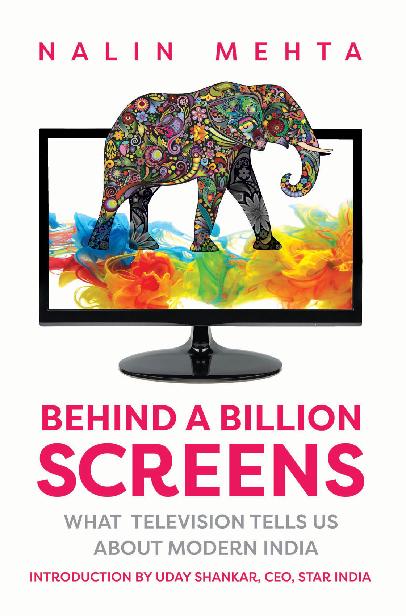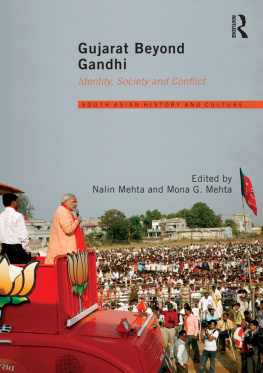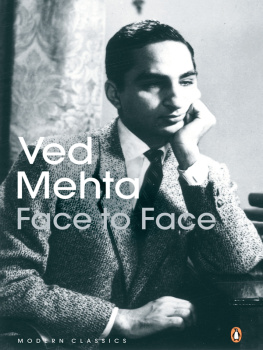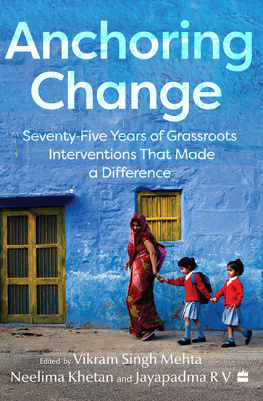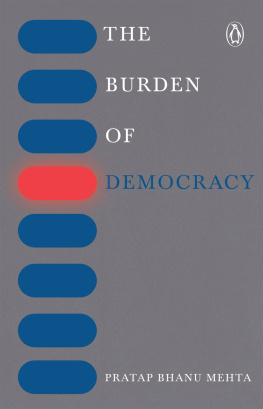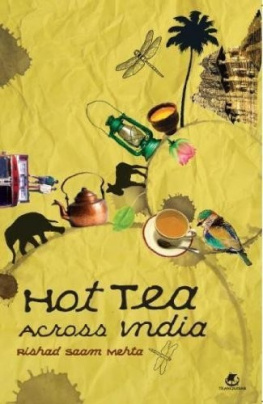Praise for India on Television:
How Satellite News Channels Have Changed the Way We Think and Act
Winner of Asian Multimedia Publishing Award 2009 for Best Book/Best Writer on Asian Media
Excellent an incisive and much needed study of how television is changing in India.
Rajdeep Sardesai, consulting editor, India Today Group, and author
Fantastic Nalin has beautifully pieced together the real, untold story behind the soundbytes.
Arnab Goswami, editor-in-chief, Times Now
Mehta has done a remarkable job [he] has produced an impeccably researched, crisply written book on a momentous development of contemporary India. It has enormous ambition and is exactly what it says it isa much-needed chronicle of the past heady decade and new and revolutionary theatre to the daily life of India.
Indian Express
Wonderfully astute and insightful analysis A book that is not only rich in anecdotes, but that also manages to marry the larger history of the medium with the personal ones of those who are trying to shape it.
Business World
The book is well-researched and etches the story of [televisions] growth with numbers, accounts of memorable incidents in simple prose that is easy to relate to For every thinking man who would like to know the medium that provides him infotainment every day, India on Television is a must on the bookshelf.
Hindustan Times
Nalin Mehta has made an authoritative, well-documented and scholarly study of this great TV expansion The saga of the mega growth of TV in India is also told in a delightful manner without losing sight of the mediums sociological, political, economic and cultural impacts on the life of Indians, urban as well as rural.
Financial Express
The quality of research it is first rate. Mehta marshals every conceivable source of research to put together the story of Indias transformation with satellite TV news He digs hard and deep to come up with some excellent bits of media history The book is full of delicious nuggets for anyone hungry to know more about the Indian media industry.
Business Standard
There are books which are relatively easy to classify. This is one such book. It is first-rate [it] is sure to change the way the thinking reader watches and understands television What stands out is the authors obvious intellectual ability, the wide range of references he has drawn from and the pains he has taken to ferret out information and views from different sources and collated them into a comprehensive whole.
Mail Today
Well researched and well written The narrative is racy, and the theoretical foundation is strong without being overwhelming. At a time when the relentlessness of 24-hour television is erasing memory, a historical account such as this is eye-opening.
Santosh Desai, Mint
A well-researched book that follows the transformation of India.
Deccan Herald
Remarkable Nalin Mehta has put together an enchanting saga of the growth of the visual media in India in this 392-page well-researched book.
The Pioneer
Nalin Mehta has produced a book that is a mine of information on how television emerged and grew in India He has brought order and focus on a terribly disorderly and constantly changing subject, and done so with a creditable degree of lucidity. He writes easily, not with the ponderous consequence of an academic who drives a reader to the nearest television soap opera, and unravels developments while sticking scrupulously to facts, all of which he has meticulously documented and attributed, should one want to go into any one aspect in further detail that he has done it so comprehensively speaks eloquently of the enormous effort he has put in to get his facts and figures. He had the advantage of being right there in the middle of it all and yet used his personal knowledge to provide a dimension that another scholar would not have been able to.
Bhaskar Ghose, Frontline
Thought provoking [Nalin Mehtas] thesis revolves around how satellite news channels are changing the Indian mindset Mehtas research is not just about the razzmatazz of news channels; he also lists stark economic realities in India, where black-and-white sets still account for an estimated 40 per cent of all television owners, a fairly big number.
Tehelka
Taking a hard look at television news content, quality and reportage, former journalist Nalin Mehtas new book India on Television traces the growth and evolution of television in India and its impact on society. The book chronicles an important period of growth of television in India and [how it has] changed the society.
The Tribune
Mehta has interesting things to say about the use politicians make of television, and he describes how some who look good on TV and perform well have been able to leapfrog over senior but less comely and more voluble colleagues. Politicians do not underestimate the effect of television on their fortunes. But, as Mehta points out, measuring the effect of television is an inexact science, and the effect can easily be exaggerated Nalin Mehta does ask whether or not television contributes to violence, widens divisions in society, or encourages a political dialogue of the deaf by staging shouting-matches between politicians Mehta believes we are hampered in [understanding TVs impact on social strife] by the satellite-size gap in the scholarship of Indian television. Others have worked to narrow that gap and Mehta has taken the process further.
Mark Tully, Outlook
The book covers a lot of ground [and] relies heavily on reportage, with interviews of over fifty people connected with the early days of satellite TV. He reconstructs the pre- and post-liberalization history of TV and analyzes the TRP ratings, its failings and its power. A theme that runs through the book is the Indianization of television. Mehta believes this is important to reiterate because in most studies of globalization, the theme is that there is a dominant centre that will come and take over.
Time Out
Mehta explains a complex story of how Indian television, in the space of about fifteen years, became the countrys most dynamic medium and how the consequences of that change affected sport, politics and most aspects of daily life. This is a dont miss book for anyone following the transformation of India.
Robin Jeffrey, Emeritus Professor, Australian National University and Visiting Research Professor, National University of Singapore
A genuine contribution to the literature, bringing together valuable material that deserves a wide audience.
Prof. Arvind Rajagopal, Professor of Media, Culture and Communication, New York University, and author of Politics After Television
For Nitika:
friend, rock, beloved wife and eternal voice of reason
Contents
Like most good things, this book was born out of a good meal and the freewheeling conversation that comes with it. On a work trip to Mumbai from my job at the time in Geneva, I had dropped in to see my friend Uday Shankar, Star Indias CEO, at his elegant Malabar Hill apartment. We had just finished polishing off the sumptuous mutton that he had personally got chopped at the butchers and cooked, and were ruminating over the state of television when the idea first came. We were both sick of many aspects of Indian television, frustrated by its numerous facets and excited by even more of its possibilities. Why not try and write a book taking a long view of what the problem with Indian television was, try and explain what was happening to it, where it was going and how this Indian story fit in with the larger global one?
